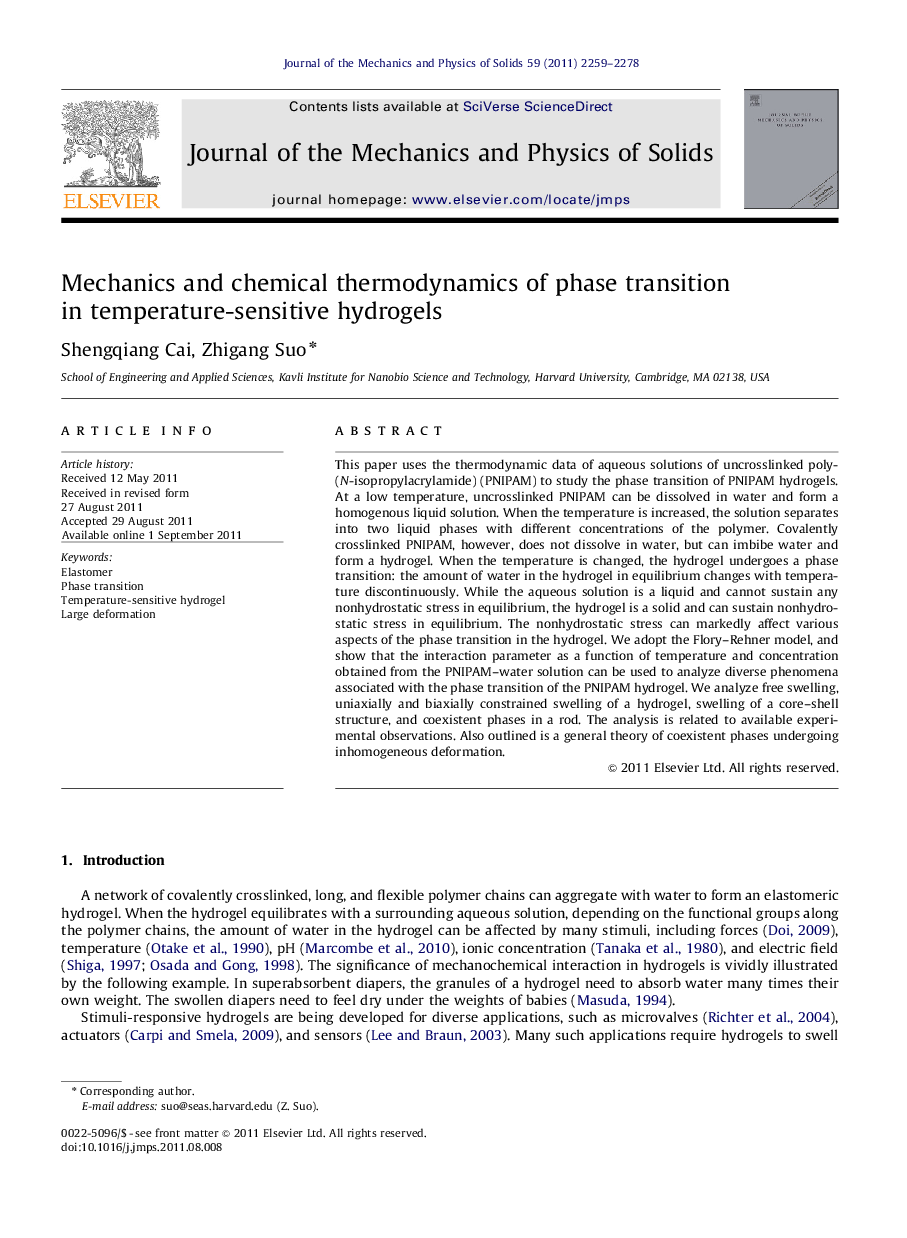| Article ID | Journal | Published Year | Pages | File Type |
|---|---|---|---|---|
| 799547 | Journal of the Mechanics and Physics of Solids | 2011 | 20 Pages |
This paper uses the thermodynamic data of aqueous solutions of uncrosslinked poly(N-isopropylacrylamide) (PNIPAM) to study the phase transition of PNIPAM hydrogels. At a low temperature, uncrosslinked PNIPAM can be dissolved in water and form a homogenous liquid solution. When the temperature is increased, the solution separates into two liquid phases with different concentrations of the polymer. Covalently crosslinked PNIPAM, however, does not dissolve in water, but can imbibe water and form a hydrogel. When the temperature is changed, the hydrogel undergoes a phase transition: the amount of water in the hydrogel in equilibrium changes with temperature discontinuously. While the aqueous solution is a liquid and cannot sustain any nonhydrostatic stress in equilibrium, the hydrogel is a solid and can sustain nonhydrostatic stress in equilibrium. The nonhydrostatic stress can markedly affect various aspects of the phase transition in the hydrogel. We adopt the Flory–Rehner model, and show that the interaction parameter as a function of temperature and concentration obtained from the PNIPAM–water solution can be used to analyze diverse phenomena associated with the phase transition of the PNIPAM hydrogel. We analyze free swelling, uniaxially and biaxially constrained swelling of a hydrogel, swelling of a core–shell structure, and coexistent phases in a rod. The analysis is related to available experimental observations. Also outlined is a general theory of coexistent phases undergoing inhomogeneous deformation.
